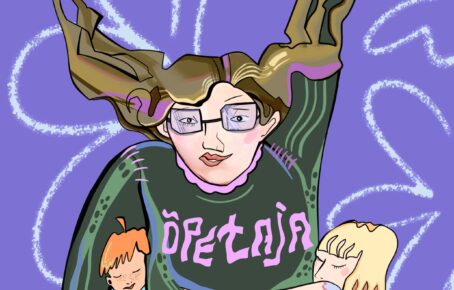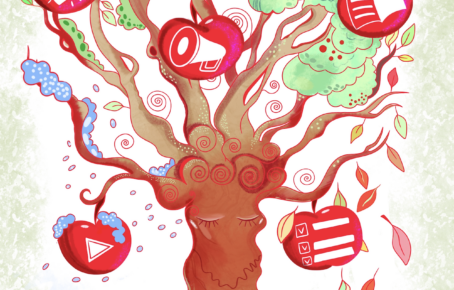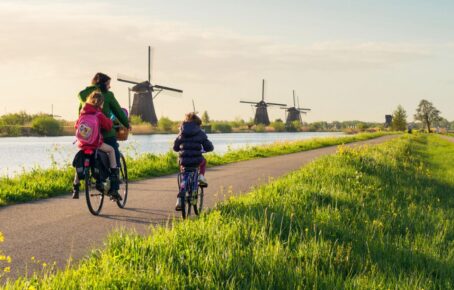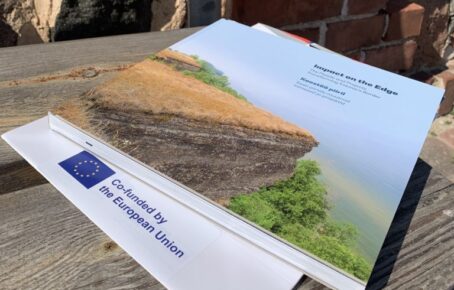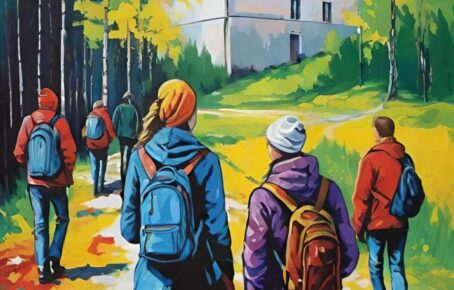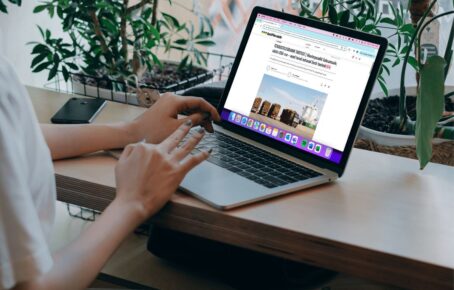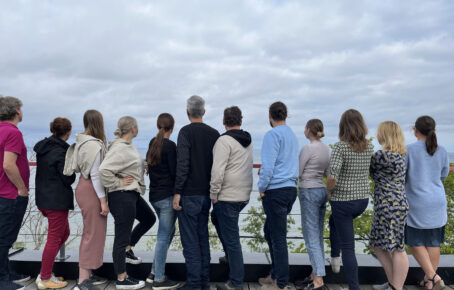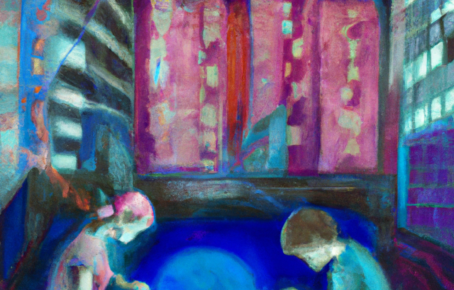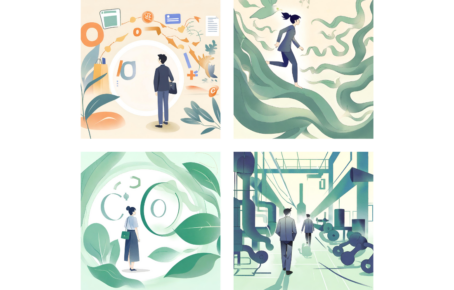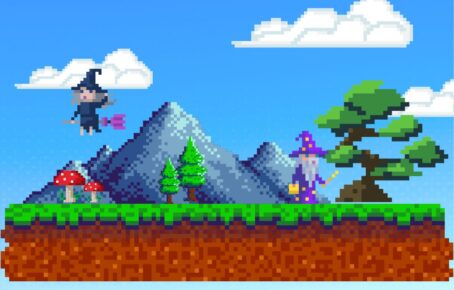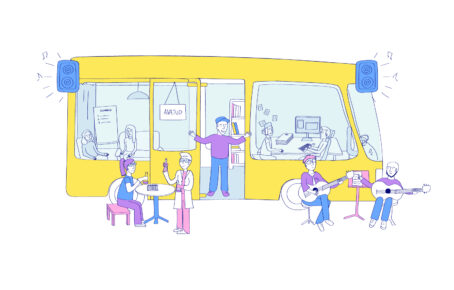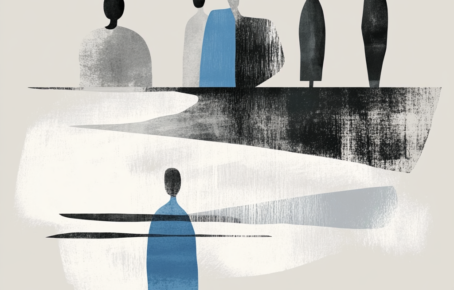
Our year-end reflection at IBS, as told by AI
Midjourney on tehisintellekti platvorm, mis loob kasutaja antud märksõnade ehk käskluse põhjal pildi. Katsetasime seda ka oma meeskonnas ja tulemuseks on pildid, mis illustreerivad meie tiimiliikmete möödunud aastat.
Over the past year, artificial intelligence (AI) has been making the rounds in international news for its ability to create brilliant – almost human like – artwork, essays, even a children’s book. AI is now being used in academia and research fields (IBS’ sector), where AI programmes like chat.openai.com can generate entire paragraphs just from a few prompts.
AI has the potential to revolutionize the way think tanks generate and disseminate research. AI algorithms can analyze large amounts of data quickly and accurately, allowing think tanks to gather insights and generate reports at a faster rate than with traditional methods. Additionally, AI can help with the tedious and time-consuming tasks of data cleaning and analysis, freeing up researchers to focus on more high-level tasks such as interpretation and writing. AI-generated reports may also be more objective and unbiased, as they are not influenced by human biases and subjective perspectives. However, think tanks should carefully consider the ethical implications of using AI to generate research and ensure that the technology is used transparently and responsibly.
In fact, AI has become so compelling that you probably didn’t realise that the previous paragraph was written entirely by AI… Yes, writing succinct and logical paragraphs about a subject is now possible in less than 10 seconds. Does this mean that researchers and academics should worry about job security? Maybe… But the purpose of this article isn’t to speculate about the horrors of a machine-run world. Instead, it is to use these fun new AI bots to help write a blog post! So, I thought it would be a fun idea to use Midjourney to help illustrate the experiences, growth, and knowledge gained in 2022 by some of our team members here at IBS.
Here’s how it works. Midjourney is an AI platform that will illustrate an image for you based on a few prompts that you give. The “prompts” are keywords that are input in the Midjourney chat box. Based on these prompts, the AI will generate a unique image. For example:
Prompt: Jerry Seinfeld eating a bowl of cereal on the moon. Hyper-realistic.
And… Voilà! You have your very own – albeit slightly terrifying – picture of a bisected Jerry Seinfeld eating cereal on the moon! I can almost hear him say “What’s the deal with space? You can’t breathe it, you can’t see it, what gives?!”
Using Midjourney, we created a prompt that best summarised our year. So we added a few keywords to see how the AI illustrates that prompt. Then, we each wrote a short explanation about the prompts we used. Here we go!
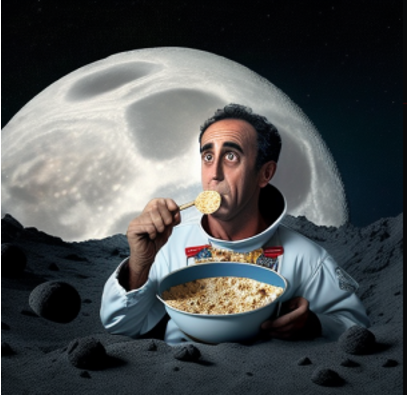
Ricky Henahan, Analyst and Project Manager

Explanation: This past year was fun and challenging. IBS finalised a few major projects such as SmartEnCity, RELaTED that I have been working on since starting at IBS in 2019. It was also a year of growth as – with the ending of these projects – I learned new tools, tricks and gained invaluable skills and personal connections that have made me a more well-rounded individual. Overall, it was a great year, and I am excited to collaborate with my colleagues and take on new challenges in the new year. Midjourney nailed the feel I was going for, with a tree symbolizing growth, the owl as wisdom, and Salvador Dali because sometimes life can be surreal.
Prompt: happiness, growth, wisdom, learning, an owl in a tree, sunshine, Salvador Dali
Mele Pesti, Analyst and Project Manager

Explanation: The end of 2022 was special for me, as I joined IBS this winter and started to have more reasons to visit the good old city of Tartu. Time to learn the moves and quickly become a pro, although – is the name of the game even chess? Definitely many possible combinations in the air. Whatever strategy I use, the desire for knowledge will definitely be fulfilled. Excited and thankful for the chance!AI definitely surprised me with this result, but I am happy with it.
Prompt: woman in a city, desire for knowledge, new, exciting, knowledge, data, chess, winter, colorful, M.C. Escher
Mart Veliste, Analyst
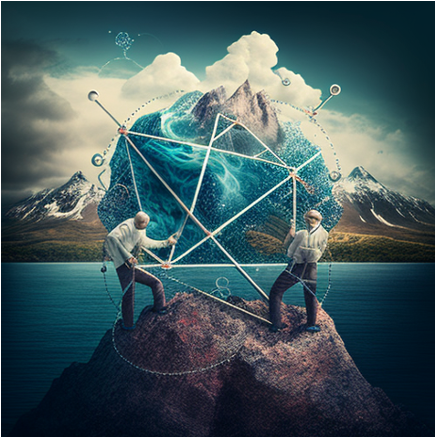
Explanation: I primarily remember two projects from the past year, one focused on Centres of Excellence and the other on teleworking practices. Both certainly broadened my knowledge. From the first, I got a good insight into what type of funding instruments Estonian scientists expect. From the second, I learned a lot about how other countries have regulated or promoted teleworking. Therefore, my prompt was based on an idea and keywords related to the two projects. To give artistic guidance to the AI, we also added “Norse art” as a reminder of my nice summer vacation in the Nordics. The result is quite fun, with two scientists doing some field work (not to be confused with teleworking!) on a small rock in the Nordics. I especially like the odd central “cloud” that includes connected poles and some mystical mist that I interpret as the World Wide Web that enables teleworking.
Prompt: two scientists, on different sides of the world, connected by a string, doing research, Nordic art, summer
Maris Pihelgas, Junior Analyst
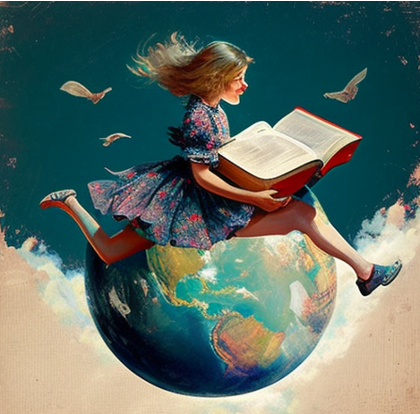
Explanation: I picked my prompt because I have been to four countries this year. I visited world-famous monuments and cities. Also, I read self-development books and took pieces of training which helped me personally and at work. More than that, I tried things I had never tried before: surfing, eating frog legs, etc. I didn’t know what to expect from AI, but I am very impressed!
Prompt: girl, flying around the earth with a book in her hand, Antoine de Saint-Exupéry
Maria Khrapunenko, Analyst
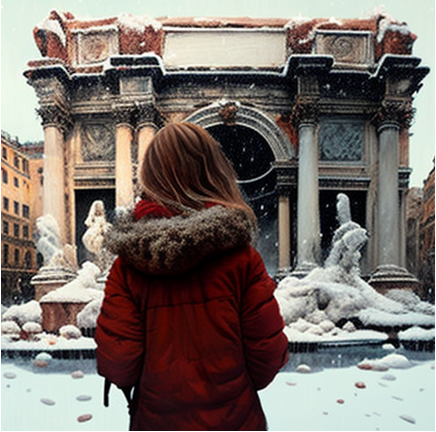
Explanation: The year, in general, has been quite a rollercoaster, but there was a balance between good and bad, love and loss – that is why it is bitter-sweet, just like dark chocolate. There were changes life-wise and work-wise, which also came with making choices. I have never travelled as much as I travelled last year, and Rome was my first solo trip which I enjoyed the most. Also, I further explored languages, words and meanings and captured more memories in photos. Although the picture generated is more gloomy and dramatic than I would like, the AI nicely combined the keywords I gave. I think AI focused on the words “solo” and “winter” too much, which explains the vibe it gives. But I like how it portrayed the architecture and the mix of colours. Overall, I was very impressed and curious about how AI did all that, so afterwards, I tried creating a couple of pictures on my own.
Prompt: bitter-sweet, winter, girl, big changes, making a choice, Rome, solo-travelling, photos, love, loss, language
Kristjan Kaldur, Programme Manager

Explanation: The prompt, most of all, describes the feeling of missing the perfect Estonian winter – a snowy and sunny day –, while being away from Estonia in the tropical weather.
The options AI generated and the one I picked, quite well describe the mood, even though the prompt was as short as possible, only a handful of keywords.The main impression is, that we seem to live at some kind of a tipping or breaking point in terms of artificial intelligence and its capabilities, and that human civilisation needs to start living together with it and adapting itself to it. And that only the most adapted creators – artists, designers, cartoonists etc. – will survive this new revolution.
Prompt: sunny day, Estonian cold winter, man, doing academic research, in front of computer, drinking green tea
Kats Kivistik, Member of the Board

Explanation: This year was challenging. Many new projects as a project manager and many challenging tasks related to those. Some difficult situations – timewise and people-wise. Also, I got new responsibilities as a member of the board, where people management is even more part of the job. Though challenging, some studies were fascinating, and I learned quite a bit of new stuff. Overall, it was a good year because of my new and not-so-new colleagues. Based on the prompt I added, Midjourney got more or less what I thought as the circle reflecting my busy work life right now. Concretely and abstractly, people and bright tomorrow are also shining from afar.
Prompt: perpetual circle of obligations, greater responsibility, managing people, fun, new skills
Final reflections
When I first had the idea for this blog post, I intended to focus on what my colleagues had experienced in the last year. However, as I delved into the subject of AI, particularly Midjourney, I started to come across both positive and negative impacts of using AI as a creative tool that warrants a deeper conversation.
From a layman’s perspective, Midjourney was fun to use. In fact, I could spend hours thinking of ridiculous combinations of prompts to see what images the AI would generate. In some ways, it is like taking those online quizzes that tell you what Harry Potter House you will be sorted into or something mindless like that – you don’t know what to expect, but it’s mildly entertaining, and the results are surprising.
I can also see Midjourney being an interesting tool for creating decent logos or branding for companies in a matter of seconds. In fact, when using Midjourney, you can see the prompts that other users are adding to the chat in real-time. From what I observed, many of the users were using Midjourney to create logos for small businesses. While this could be a risk for artists and graphic designers, I also saw the benefit for them, for example, if a designer has a mental block and needs some inspiration, they can describe what they would like to draw and the AI will generate an image they can use as a starting point.
There is also a dark side to using Midjourney. The obvious example would be the risk it poses to creative industries – web designers, graphic designers, etc. – who could become irrelevant in a few years. But a less apparent negative impact of AI-generated images that have come to the fore is copyright infringement of other artists whose work is available online. Essentially, the AI tool will “scrape” the internet for source materials (artist-created graphics, images, portraits, etc.) to create artwork based on your prompt. Of course, this is debatable since the images created are unique to the prompt, albeit borrowing style cues from what is on the internet. But is this different from how human artists influence and create art? Something to ponder…
As it relates to the growth and experience of my colleagues, I think this year was indeed one of the significant changes for the Institute of Baltic Studies. Several new colleagues joined us, we welcomed a few members back, ended long and career-defining projects, and are moving full steam ahead in 2023. Even with the tense geopolitical situation we find ourselves in, these trials and tribulations have made us closer as an organisation. I, for one, am very excited to see what this year will bring for IBS.
